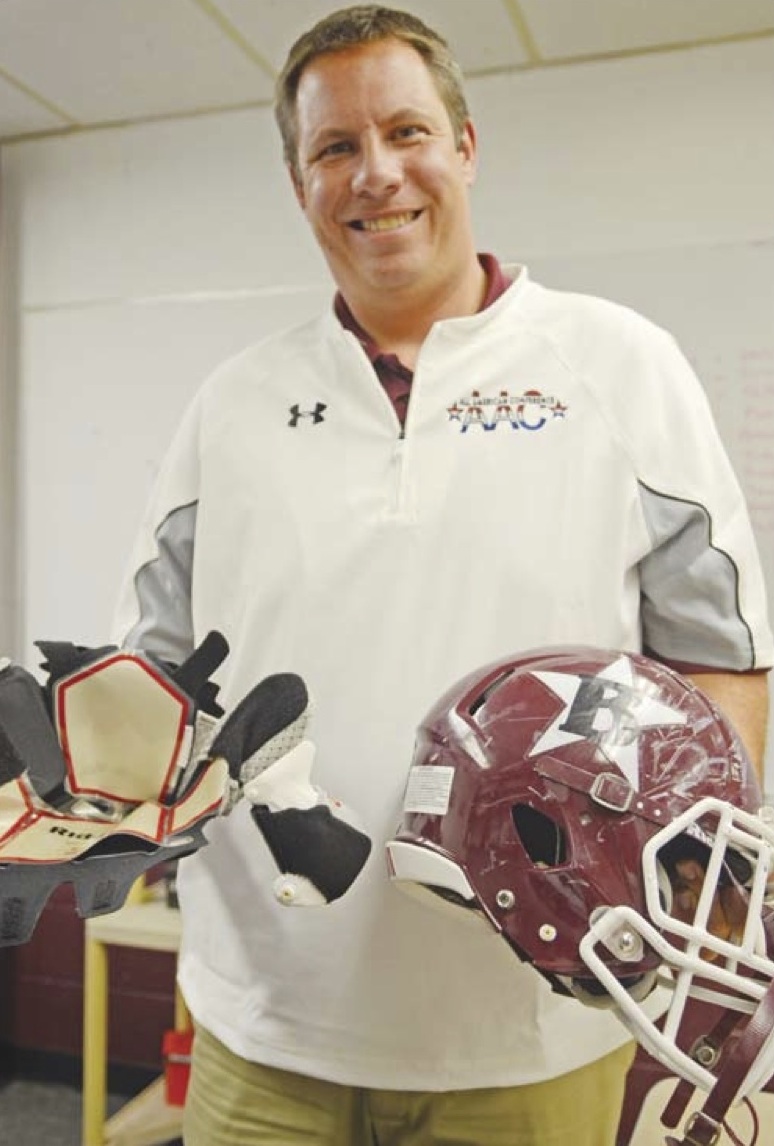Boardman hopes technology helps prevent, treat concussions

Boardman hopes technology gives trainers
edge in battle to prevent, treat concussions
BOARDMAN
There are an immeasurable number of collisions in every football game.
Thanks to new proactive equipment from Riddell, Boardman High School can now measure just how dangerous those collisions can be for its players.
The Riddell InSite Impact Response System tracks, records and alerts coaches of high impact hits that occur during the course of a game or practice. A five-point censor system — located in an additional liner that’s placed inside a player’s helmet — absorbs the impact of each collision and transmits the information wirelessly to a hand-held device that can be monitored by a coach or trainer on the sideline.
The device is designed to send out an alert on higher-than-normal impact plays on which the medical staff may want to conduct further testing.
It’s important to note the technology is intended only to be used as a warning signal, not a concussion diagnosis.
“What we at Boardman hope this does is ensure a higher level of safety for our players,” assistant athletic director Nick Hewko said. “We understand it’s not an exact science, but it’s the best that’s out there and we’re committed to keeping our kids safe.”
It’s believed that Boardman is the first northeast Ohio school district to use the Riddell product, and one of only a few in the state.
The Spartans have six units that they place inside the helmets of players who are most susceptible to big hits, according to the school’s head athletic trainer Larry Davis.
That category includes running backs, linebackers, quarterbacks and wide receivers for the time being.
“We would like to have all of our kids use them,” said Davis, who’s been an athletic trainer for 29 of his 34 years at Boardman.
“We just want to make sure they’re as effective as we expect them to be.”
Cost could also be an issue for some schools. Each player unit (helmet liner) cost $150 and the alert monitors run $200, according to the Riddell website. The monitors can cover up to 150 players, but if each player on the team were to get a helmet unit, the costs add up quickly.
“One of the neat parts about the technology is the tracking system,” Hewko said. “Our coaches and trainers can go back after a game or a practice and actually see at what point the biggest hits happened.
“It’s all on the computer, so we can actually see if an offensive player is leading with his head too much or if a defensive player is lowering his head to make a tackle. So it’s a very helpful teaching tool as well.”
Hewko said Boardman has had four instances in its last two games where the monitor has alerted them of a dangerous collision. In each instance the player wasn’t injured or forced to leave the game, but it was reassuring to the staff that they were aware of what was happening.
The other thing Boardman has implemented this season is ImPACT Baseline Testing exams through the University of Pittsburgh Medical Center.
It’s a preseason physical that creates a baseline evaluation of neurocognitive functions (brain processing, speed, memory) to be used by team trainers as a comparative to the results of a post-injury assessment.
“Basically if they are diagnosed with a concussion, there’s a mandatory seven-day period, no questions asked, in which the player can’t do anything,” Davis said. “Once they’re symptom-free for four days, we test them again.
“If the test doesn’t match up with their baseline test, we re-evaluate every 48 hours until it does.”
There’s no technology that’s been created yet to completely eliminate concussions, and there may never be.
All Boardman hopes to do is stay ahead of the curve in player safety.
 43
43










Subscribe Today
Sign up for our email newsletter to receive daily news.
Want more? Click here to subscribe to either the Print or Digital Editions.
AP News